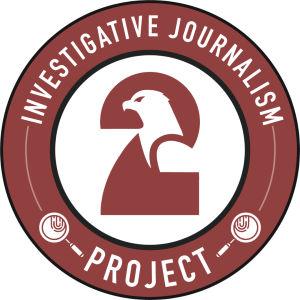Michael L. Nance, MD, has serious problems telling the truth.

Thank you for reading this post, don't forget to follow and signup for notifications!
by Children’s Hospital of Philadelphia, which is known as “CHOP.”
Nance has also been called both an associate and an investigator for CHOP’s Center for Violence Prevention, which is almost violently anti-gun.
The Center for Violence Prevention publicly supports wild anti-gun policies such as mandatory child-access laws, universal background checks, strict limits on “assault-style weaponry,” court-ordered firearm storage laws and, of course, more funding for firearm-related research, which of course would be paid directly to the Center for Violence Prevention.
Nance has written scores of stories on what he believes are the perils of guns and gun ownership, including 2020’s “Most Mass Shootings Occur Within a Mile of a School or a Place Where Children Live, Learn and Play.”
“Firearms are the second leading cause of trauma-related death in children in our Trauma Centers,” Nance said in the news release announcing his work. “Our findings highlight the sheer extent of the problem and show how closely mass shootings are tied to our communities, and especially to the places where children learn and play.”
The story, for which Nance was the main author, raises the question of how his group defines a mass shooting. After all, the FBI defines a mass shooting as an event where four or more people are murdered.
But Nance’s press release states his team uses a different definition, which they got from a cringe-worthy anti-gun group.
“The researchers defined mass shootings as events involving four or more people injured or killed by a firearm in a single setting, using data from the 2019 Gun Violence Archive,” Nance’s story states.
The Gun Violence Archive?
Their data is bunk—it’s made up. Anything that’s based on the Gun Violence Archive is nothing but complete fiction. Literally, no one who matters uses their data anymore, not since we outed them in 2021. Even the Trace quit citing GVA numbers and created their own database, which isn’t much better.
Why would Nance quote the GVA?
The GVA
The Gun Violence Archive, or GVA, was founded in 2013 by Michael Klein, a left-leaning philanthropist and open-government advocate, and Mark Bryant, a retired computer analyst and GVA’s current executive director.
According to Bryant’s all-inclusive definition, there were 417 mass shootings in 2019. The FBI says there were 30, because it uses a much more realistic definition. Bryant’s mass-shooting definition—four people were shot—is the same one Nance is using.
Still, the overly broad definition didn’t stop the anti-gunners.
The Biden administration cited Bryant’s GVA data constantly, as did a bevy of other elected officials and political candidates, at the local, state and federal level.
The New York Times, National Public Radio, USA Today and a host of other media outlets also used GVA’s broad definition when reporting about mass shootings.
During a 2021 interview with the Second Amendment Foundation, Bryant said his GVA researchers consult “a mass of about 7,500 sources. They are law enforcement Twitter, law enforcement Facebook, law enforcement police blotters and then we have media sources. The easiest is to grab media sources. Law enforcement is clinical. The media looks more subjectively at an incident.”
Bryant acknowledged that there have been reliability issues with media stories, especially after a mass shooting. A shooting in Cincinnati, he said, produced several different versions of events. “When we looked at five media sources, they were all over the map, even about when it occurred. We know that some media reports are erroneous.”
However, for his audience, none of these accuracy problems were ever important, as long as the numbers remained high.
Nance and the GVA
Nance’s story about alleged trauma deaths was not the only time he has relied upon GVA data to make a “point.” He has added their false and misleading data to multiple stories.
In March 2020, his team claimed, “Most Mass Shootings Occur Closest to Hospitals without Verification to Treat Trauma.”
“The researchers used the Gun Violence Archive to analyze all 2019 mass shootings, defined as five or more injuries or deaths by firearm, and found a total of 187 mass shooting events,” Nance wrote.
In September 2020, Nance and his team published “Locations of Mass Shootings Relative to Schools and Places Frequented by Children.”
“Mass shootings were defined as events involving 4 or more people injured or killed by a firearm in a single setting. The events were documented in the Gun Violence Archive for calendar year 2019. Using Google Maps, we calculated the walking distance (miles) from the geocoded address of the event to the nearest school (K-12) and places of interest (POIs), ie, places where children congregate,” Nance’s team wrote.
Another story Nance and his team published in 2020, “Pediatric firearm injuries: Anatomy of an epidemic,” which was also based of bad data from the GVA, was cited as gospel in five additional stories ranging from an examination of firearm injuries among young people to pediatric suicide, to a story about forensic evaluations of firearm injuries.
Takeaways
Nance and his team didn’t always rely on bad data from the Gun Violence Archive. In 2009, four years before the GVA was founded, they attacked gun dealers in a story titled, “Homicide and geographic access to gun dealers in the United States.”
The numbers Nance’s team allegedly found were summed up in their conclusion: “Modification of FFLs through federal, state, and local regulation may be a feasible intervention to reduce gun homicide in major cities.”
While to anyone who has ever known a gun dealer, Nance’s conclusion is laughable, we were not his audience. He targets the medical community and public officials with his anti-gun propaganda, not gun owners, and given all the abbreviations after his name, it’s effective.
Nance did not return phone calls left with his secretary or personal emails sent to him at the CHOP, which is too bad.
As an author, Nance is responsible for the content of his stories, regardless of when they were written—especially their accuracy.
Authors know that, unfortunately, most propagandists don’t.
The Second Amendment Foundation’s Investigative Journalism Project wouldn’t be possible without you. Click here to make a tax-deductible donation to support pro-gun stories like this.




